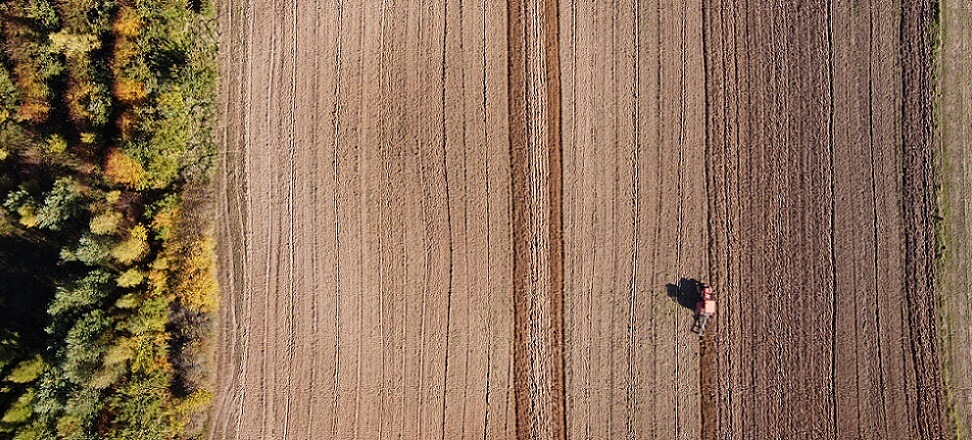Climate change is a fact of life. They affect most areas of our lives. A sector closely linked to the climate is agriculture. Factors such as temperature, precipitation and sunshine directly affect the possibility of agricultural production. The occurrence of extreme phenomena: heavy rains, droughts, strong winds also have a significant impact. It should also be mentioned that they also contribute to the appearance of alien and invasive species and a higher incidence of disease. On the other hand, it is agriculture, through the emission of greenhouse gases (including methane and nitrous oxide), that significantly affects climate change, accelerating the process of global warming.
What does climate mean for agriculture?
We define climate as the totality of weather phenomena occurring in a specific area over an extended period of time. From the point of view of agriculture, it is important to change climatic factors such as air temperature and its annual distribution, affecting, among other things. on the length of the growing season, sowing dates, frost-free periods or increased evaporation during the summer months; the amount and type of precipitation along with its annual distribution, determining the availability of moisture to plants and the occurrence of droughts, as well as the occurrence of extreme events that can destroy significant areas of agricultural crops.
Climate change scenarios in the agricultural context
Currently, two scenarios are considered when analyzing climate change. The first (RCP4.5) assumes the introduction of new technologies and greater reductions in greenhouse gas emissions than at present, while the second (RCP8.5) assumes maintaining the current rate of emissions growth. Both forecast an increase in Poland’s average temperature by the end of the century of about 1.3οCand more than 3οC, respectively, compared to the average of the 2011 – 2020 decade. The biggest changes are projected in the winter and summer months – the most significant from the point of view of agricultural activity. They may result in the need for modifications in agricultural practices, such as the timing of sowing, harvesting or fertilization.
Both scenarios predict a decline in the number of days with frost (with a minimum temperature below 0οC) by the end of the century, from 95 days currently to approx. 70 in the first scenario and up to approx. 35 days in the second. Projections for the number of hot days (with a maximum temperature above 30οC) show them doubling in the first scenario and tripling in the second.
The number of days with an average temperature above 5οCis also an important climate parameter, from an agricultural perspective. Both scenarios forecast an extension of the growing season (by about 20 days in the RCP4.5 scenario and by about 60 days in RCP8.5).
The second climatic factor analyzed is precipitation. Both scenarios assume an increase in annual precipitation of 50 to 70 mm. However, this increase will be due to an increase of 3 – 5 days with extreme precipitation (>20 mm). The increase in precipitation totals will be greatest in the foothills and over the sea. The area of central Poland will show a downward trend in this regard.
Analyzing the distribution of precipitation throughout the year, the amount of precipitation is projected to decrease by several percent during the summer, which may result in prolonged rainless stretches, combined with high air temperatures and ample sunshine. At the same time, winter precipitation totals are expected to increase by 10 – 25%, which may cause excessive soil moisture in early spring.
Forecasts of the thickness of the snow cover indicate a reduction in maximum thickness by 15 – 20%.
Seeking positive effects of climate change in agriculture
Some of the projected climate change will have positive effects on agriculture. Studies on more than 150 species of cultivated and wild plants have shown that an increase in atmosphericCO2 concentration will result in stimulation of their growth and increased photosynthetic intensity. However, it can also cause an increase in weed activity, which will compete with crops.
The extension of the growing season and the frost-free period can result in an overall increase in agricultural productivity and the possibility of growing new crop species. However, it will be necessary to take measures to meet their water needs in the long term.
Warmer winters and springs will enable many plant and animal species to survive the cold period more easily, but this will also apply to weeds, pests, insects and various diseases.
Based on the models, it can be concluded that there will be an acceleration of sowing and harvesting dates. The sowing date for corn is forecast to change by 3 to 7 days, and for spring cereals and potatoes by 7 to 12 days. There will also be an acceleration of the harvest date by 2 – 5 days for corn, 6 – 10 for spring cereals and and 5 – 12 days for potatoes.
On the one hand, warmer springs will reduce losses associated with spring frosts, but on the other hand, projected earlier sowing and flowering times may more strongly expose plants to frost, if it already occurs. As a result, yields may be more variable year to year.
Negative effects of climate change on agriculture
Among the negative effects of climate change, one can distinguish those directly and indirectly related to it. It is known that the availability of plants to water resources in the right amount and at the right time is particularly important. Snow cover is a very important water storage. Reducing its thickness and shortening its time of occurrence will be important for the soil’s abundance of water, necessary for spring germination. At the same time, the snow, melting in the spring, allows water to gradually penetrate deep into the ground, thus recharging groundwater. In the absence of snow and vegetation in winter, rainwater quickly flows down the surface into rivers and is further discharged into the sea, with only a small amount of groundwater recharge. The consequences of limited groundwater recharge in the spring are the low water levels in rivers that occur later and a longer-lasting drought. The drought phenomenon will be amplified by a decrease in precipitation totals during the summer months, an increase in the average temperature and the number of hot days, and a consequent increase in evaporation, as well as the occurrence of torrential rains that quickly run off the ground. All of these factors will reduce plant access to water resources and crop productivity.
Drought is the cause of deterioration of water relations in the soil. This affects most of the processes that take place in it, and consequently the soil structure deteriorates, humus content decreases, and fertility and production capacity decreases. Dry soils will be subject to increased wind erosion during the summer. At the same time, if there is heavy rainfall, erosion associated with rainwater runoff will increase and soil aggregates and its ability to retain water will be destroyed.
Forecasted milder winters will allow pests, insects, weeds and species that carry dangerous diseases to survive the cold period. In addition, agrophages adapt well to increases inCO2 concentration and temperature. The prevailing conditions may favor the development of many invasive species and pathogens not currently found in Poland. At the same time, native plants will be exposed to greater stress from the environment and become more vulnerable to pests and diseases.
Within livestock production, the impact of climate change will be marked by increased heat stress on animals along with reduced access to water. Animal immunity will decline, and insect-borne diseases will appear earlier. As a result of climate impacts on agricultural production, the quality and availability of feed will deteriorate.
Ongoing climate change will lead to an increase in the number of days with unfavorable weather conditions for production. The expected increase in extreme events may also have a direct impact on crop losses. It is estimated that in crop production the losses due to climate change will outweigh the benefits, so it will be crucial to carry out adaptation measures.
In the article, I used, among others. From the works:
- SHORTED REPORT Changes in temperature and precipitation over Poland under future climate conditions until 2100, Joanna Strużewska, Ph.D., IOŚ-PIB January 2020
- Review and draft update of the Program of measures to reduce water pollution by nitrates from agricultural sources and prevent further pollution. Analysis of climate change and impacts on agriculture from 2000 to 2020 with an outlook over the 2030 and 2050 time horizons, Ministry of Infrastructure, March 2022
- Assessment of the impact of climate change on biodiversity and the resulting guidelines for the actions of the administration of nature conservation until 2030, Rafal Bartosz, et.al, General Directorate for Environmental Protection, 2021
- https://klimada2.ios.gov.pl/ (accessed 20.01.2023)
- https://www.eea.europa.eu/pl/sygna142y/sygnaly-2015/artykuly/rolnictwo-wobec-zmian-klimatu (accessed 20.01.2023)

 Polski
Polski






